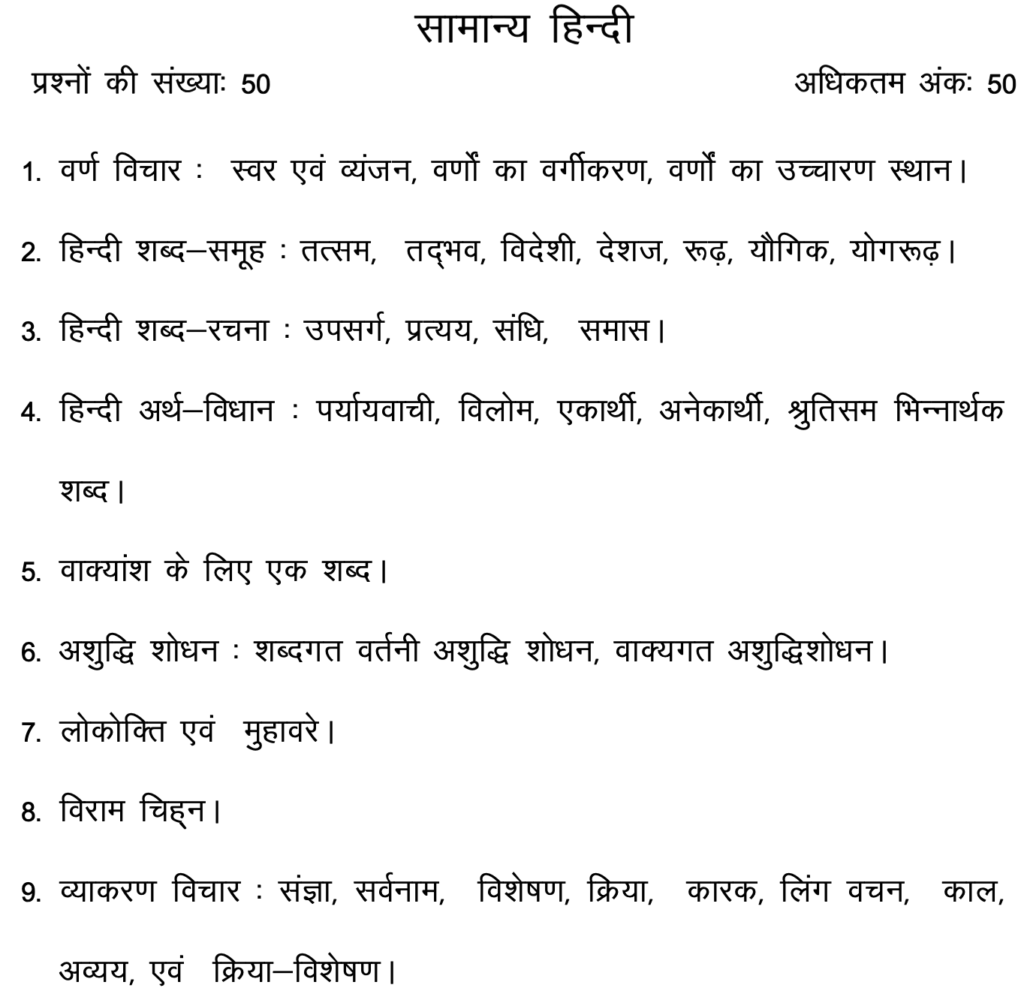The Uttarakhand Public Service commission has invited applications on 210 posts of Assistant Statistical Officer (ASO) and Investigator cum computerist (ICC) in the month of February. The recruitment is planned in various department under govt of Uttarakhand. The good news is, its exam date has already been declared by UKPSC which is on 6 October 2024.

Contents
- 1 UKPSC ASO / ICC Syllabus 2024
- 2 UKPSC ASO Exam Pattern 2024 | Uttarakhand ICC Exam Pattern
- 3 Detailed Uttarakhand ASO / ICC Syllabus 2024
- 4 PAPER I GENERAL HINDI SYLLABUS
- 5 Paper-I Techniques Of Statistical Analysis Syllabus
- 6 1: MATHEMATICS/INDUSTRIAL MATHEMATICS/APPLIED MATHEMATICS SYLLABUS
- 7 2: STATISTICS/MATHEMATICAL STATISTICS / APPLIED STATISTICS SYLLABUS
- 8 3: ECONOMICS/APPLIED ECONOMICS/BUSINESS ECONOMICS/ ECONOMETRICS SYLLABUS
- 9 4: COMMERCE SYLLABUS
- 10 5: DATA SCIENCE SYLLABUS
- 11 Computer Operation Practical Examination Ability Test Syllabus
- 12 Important Links for ASO – ICC Exam 2024
- 13 Assistant Statistical Officer & Investigator cum computerist Syllabus 2024
UKPSC ASO / ICC Syllabus 2024
We know you have already applied for this Uttarakhand ASO exam 2024, obviously that’s why you are here. Therefore, we have posted a detailed written exam UKPSC ASO syllabus which is also applicable on Investigator cum computerist (ICC) posts.
Read details about ASO exam pattern (sahayak sankhyiki adhikari) for both objective and subjective type of questions. Please make sure to read official ASO notification for other details related to this exam.
हमने सहायक सांख्यिकीय अधिकारी (ASO) और अन्वेषक सह कंप्यूटरिस्ट (ICC) के पद के लिए पाठ्यक्रम और परीक्षा पैटर्न प्रकाशित किया है। कृपया इसे ध्यान से पढ़ें और अपनी आगामी एएसओ परीक्षा 2024 की तैयारी शुरू करें।
UKPSC ASO Exam Pattern 2024 | Uttarakhand ICC Exam Pattern
| Paper | Subject | Questions | Max Marks | Time |
|---|---|---|---|---|
| Paper-I | General Hindi & Techniques Of Statistical Analysis | 100 | 100 | 2 Hours |
| Paper-II | Optional (Any 1 out of 5) | 200 | 200 | 3 Hours |
| TOTAL | 300 | 300 |
so, we have provided you all the details (subject wise), their syllabus and questions coming in exam from each section. Hope you like our effort to put out ukpsc also syllabus 2024. In case of any doubts regarding ASO exam pattern, syllabus, computer test or anything, please use the comment section to ask you question. Best of luck for Uttarakhand ASO Exam 2024.
Detailed Uttarakhand ASO / ICC Syllabus 2024
Below is the syllabus of General Hindi (50 Marks) and techniques of statistical analysis (50 marks). Read the following syllabus carefully:-
PAPER I GENERAL HINDI SYLLABUS

Paper-I Techniques Of Statistical Analysis Syllabus
- Statistics, Definition, Scope, Functions, Limitations, Distrust & Misuse.
- Collection of Data: Primary Data, Secondary Data, Elementary Idea of Sampling Techniques, Classification. Tabulation & Frequency Distribution; Presentation of Data: Graphical and Diagrammatic.
- Measures of Central tendency: Arithmetic Mean, Geometric Mean, Harmonic Mean, Median & Mode. Quartiles, Deciles and Percentiles.
- Measures of Dispersions: Range, Quartile Deviation, Mean Deviation, Standard Deviation, Coefficient of Variation, Moments, Skewness, Kurtosis and their measures.
- Index Number: Meaning, Importance, Laspeyare, Paasche’s, Marshall and Fisher Ideal Index numbers. Construction of Index Numbers and their Calculation, Cost of living Index number. Change of Base, Splicing, Deflating.
- Simple Correlation: Linear & Rank, Simple Regression Analysis.
- Fundamentals of Mathematics: Elementary Set Theory; Number System, Elementary Algebra, Co-ordinate Geometry; Straight Lines; Rates Ratios, Percentage & Logarithms, Permutations and Combinations
- Elementary Probability Theory, Additive and Multiplicative Theorems, of Probability Conditional Probability.
- Indian Statistics: Population, Labour, Money & Banking, National Income, Agricultural Production, and Industrial Production, Indian Statistical Systems, C.S.O, N.S.S.O, Directorate of Economics & Statistics (D.E.S.), Govt. of Uttarakhand, Structure, Functions.
PAPER II OPTIONAL (ANY ONE OUT OF 5)
1: MATHEMATICS/INDUSTRIAL MATHEMATICS/APPLIED MATHEMATICS SYLLABUS
1. ABSTRACT ALGEBRA: (i) Theory of Equations: Existence of roots of the general equation. Descartes’ rule of signs. Real and Complex roots of polynomial equations. Relations between the roots and coefficients of the equations. Symmetric functions of the roots and transformation of equations. Algebraic solution of cubic and biquadratic equations.
(ii) Groups and Rings: Sets, Relations, Equivalence relations. Groups, Order of group, Sub-groups, Centre of a group, Normalizer/Centralizer of an element and a subgroup, Cosets of a sub-group, Lagrange’s theorem. Cyclic groups. Normal subgroups, Quotient groups. Homomorphisms and Isomorphisms of groups, Kernel of homomorphism, Fundamental theorems of group homomorphisms. Permutation groups, Cyclic notation, Symmetric and Alternating groups, Cayley’s theorem. Rings, Characteristic of a ring, Sub-rings, Ideals and Algebra of ideals.
2. LINEAR ALGEBRA: (i) Vector Spaces: Vector spaces and its examples, Subspaces, Linear and Direct sums, Quotient space, Linear span of a subset of a vector space. Linear dependence and independence of vectors and subsets of vector space. Basis and Dimension of a vector space/subspace, Linear and Direct sums, Examples of infinite dimensional spaces, Ordered bases and coordinates.
(ii) Linear transformations: Null spaces and Ranges, Rank and Nullity theorem, Invertibility and Isomorphisms of linear transformations, Algebra of linear transformations, Matrix representation of a linear transformation, Change of basis, Linear functional, Dual spaces, Canonical forms, Eigen values and vectors of linear operators, Eigen spaces, Minimal polynomial, Diagonalization of square matrices.
(iii) Inner Product Spaces: Inner products and norms, Orthogonal and Orthonormal vectors, Orthogonal complement of a set. Gram -Schmidt process for orthogonalisation.
3. NUMERICAL ANALYSIS: (i) Errors: Exact and Approximate numbers, Rounding-off of numbers, Significant and Correct digits. Various types of errors encountered in computations, Propagation of errors.
(ii) Solution of equations: Solution of linear simultaneous equations by LU- decomposition method, Gauss elimination method, Jacobi and Gauss- Seidel iterative methods. Roots of non-linear equations by Newton-Raphson and fixed-point iterative methods with their convergence criteria for one variable problems.
(iii) Interpolation: Finite difference operators, Newton’s forward and backward Interpolation formulae, Bessel and Stirling’s interpolation formulae. Lagrange formula for unequal intervals.
(iv) Numerical differentiation and Integration: First and Second order differentiation by various interpolation formulae. Trapezoidal, Simpson’s 1/3rd and 3/8th rules with errors.
(v) Solution of ODE: Solution of first order ordinary differential equation by Picard’s method, Euler and modified Euler method, Runge- Kutta fourth order method.
4. CALCULUS:- Limit, continuity and differentiability of a function of one variable. Maclaurin and Taylor’s theorems. Maxima and Minima of a function. Limit, Continuity, Differentiability of functions of two variables, Partial differentiation. Euler’s theorem for homogeneous functions. Jacobians, Taylor’s theorem, Maxima and Minima of functions of two variables, Lagrange’s multipliers method.
Rectification and Quadrature. Surface and Volume formed by revolution of plane curve. Beta and Gamma functions, Double and Triple integrals, Dirichlet integral. Differentiation under integral sign.
5. ANALYTICAL GEOMETRY:- Two-dimensional geometry of straight lines and conics referred to Cartesian and Polar coordinates systems. Three-dimensional geometry of Planes, Straight lines, Spheres, Cones, Cylinders
6. DIFFERENTIAL EQUATIONS:- Solution of ordinary differential equations of first order, Singular solution. Solution of ordinary linear differential equations of second order with constant coefficients. Euler- Cauchy equations. Solution of second order differential equation by Order reduction method, Change of dependent variable and independent variable methods and method of variation of parameters.
7. COMPLEX ANALYSIS:- Algebra of complex numbers, Limit, Continuity, Differentiability and Analyticity of a function of a complex variable. Cauchy- Riemann equations, Harmonic functions, Method for finding the harmonic conjugate, Milne’s method for analytic function. Power series, Radius of convergence, Uniform convergence. Cauchy’s theorem and Cauchy integral formula. Taylor’s and Laurent series. Zeros and Poles of a function. Residues at singular points. Cauchy- Residue Theorem, Contour integration of simple proper and improper integrals. Bilinear transformation with applications.
8. MECHANICS: (i) Statics: Conditions of equilibrium for a system of forces in 3-dimensions. Virtual work. Centre of gravity of a system. Common Catenary.
(ii) Dynamics: Tangential and Normal, Radial and Transverse velocities and accelerations. Motion of a particle in a straight line, Simple harmonic motion and its applications. Central forces and Orbit, Constrained motion in circle and cycloid. Motion under resisting medium.
9. MATHEMATICAL ANALYSIS:- (i) Structure of point Sets: Open sets, Closed sets, Derived sets and Countable sets of real numbers.
(ii) Convergence of real sequences: Limit points of a sequence, Convergent sequences, Cauchy’s general principle of convergence. Uniform convergence of the sequence of functions, -test.
(iii) Infinite Series: Infinite Series with different tests of convergence. Uniform convergence of the series of functions. Weierstrass M-test.
(iv) Riemann Integral: Definition, Refinements of partitions, Riemann sums, Conditions of integrability, Some integrable functions. Fundamental theorems of calculus.
10. LINEAR PROGRAMMING PROBLEMS:- Convex sets and convex functions. Graphical solution of Linear Programming Problems. The simplex algorithm-method, Big-M and Two-phase methods, Degeneracy, Alternative optima, Unbounded and Infeasible solutions. Duality and Dual simplex method, Relationship between the primal and dual solutions. Transportation and Assignment problems.
2: STATISTICS/MATHEMATICAL STATISTICS / APPLIED STATISTICS SYLLABUS
- Descriptive Statistics: Primary and secondary data, classification and presentation of data, diagrammatic and graphical representation of data; Frequency distribution, Measures of location and dispersion, skewness and kurtosis. Bivariate data. Karl Pearson Correlation and Rank correlation coefficient. Partial and multiple correlation. Principle of least squares and curve fitting. Linear regression. Fitting of regression lines, Regression coefficients and their properties.
- Probability and Distribution Theory: Classical, statistical and axiomatic definitions of probability. Additive and Multiplicative laws of probability, Conditional probability, Bayes’ theorem and its applications. Random variable, discrete and continuous random variables; Probability density and Distribution functions and their properties. Joint and marginal distributions, conditional distributions, Distributions of functions of random variables. Mathematical expectation and conditional expectation. Additive and multiplicative theorems of expectation. Characteristic function and moment generating function, Tchebycheff inequality. Weak and strong laws of large numbers and central limit theorem. Standard probability distributions–Discrete Uniform, Bernoulli, Binomial, Poisson, Geometric, Negative binomial, Rectangular, Exponential, Normal, Beta, Gamma; Fitting of Binomial, Poisson and Normal distributions.
- Inference Estimation: Concept of estimation, Properties of good estimator; Estimation by methods of maximum likelihood and moments, Optimal properties of maximum likelihood estimators; Minimum variance unbiased estimators. Minimum variance bound; Cramer-Rao inequality. Sufficient estimator and Factorization theorem. Rao- Blackwell theorem. Interval estimation.
- Null, Alternative, Simple and composite hypotheses. Two types of errors. Critical region. Power function. Most powerful and uniformly most powerful tests. Neyman- Pearson fundamental lemma. Unbiased and Randomized tests. Likelihood ratio test. Non Parametric Tests: Advantages and disadvantages of non parametric tests, run test for randomness, one sample tests: sign test, Wilcoxon signed rank test, Kolmogarov-Smirnov’s test, Median test and Mann-Whitney U-test.
- Analysis of Variance and Design of Experiments: Analysis of variance for one way and two way classifications; Fixed, mixed and random effect models; Basic principles of experimental design-randomisation, replication and local control; Analysis and layout of completely randomised design, randomised block design and Latin square design, Simple and factorial experiments 2 2 experiments.
- Sampling Theory and Official Statistics: Concept of population and sample, Complete enumeration versus sampling; sampling and non-sampling errors, Types of sampling: Purposive and random sampling, simple random sampling with and without replacement, estimation of population mean, population proportions and their standard errors. Stratified random sampling, proportional and optimum allocation, comparison with simple random sampling; Systematic sampling
- (Linear case only), Estimation of population mean and standard error of this estimate, comparison with simple random sampling.
Sampling with probability proportional to size (with and without replacement method), Concept of multistage sampling and its application, Introduction to Indian statistical system, national and state statistical systems and their activities, role of CSO & NSSO. - Applied statistics Quality Control: Process control and product control: control limits, charts for attributes p chart, np chart, c-chart, charts for variables: (,R), (,σ) charts. Acceptance sampling plans for attributes inspection; single and double sampling plans and their properties.
- Demography and Vital Statistics: Complete life table and its main features, Uses of life table. Abridged life tables. Stable and stationary populations.
- Measurement of Fertility: Crude birth rate, General fertility rate, Age specific birth rate, Total fertility rate, Gross reproduction rate and Net reproduction rate. Measurement of Mortality: Crude death rate, Standardized death rates, Age-specific death rates, Infant Mortality rate and Death rate by cause.
- Index Numbers: Definition and Construction of Index Numbers, Problems faced in the construction of Index Numbers, Weighted and unweighted Index Numbers. Price relatives and quantity or volume relatives, Laspeyre’s, Paasches’, Marshal Edgeworth and Fisher index numbers; chain base index number, tests for index number, Construction of index numbers of wholesale and consumer prices.
- Time Series Analysis: Introduction to time series data and its applications in various fields; Economic time series, Components of a time series; Additive and multiplicative models, determination of trend, method of moving averages, seasonal and cyclical fluctuations, Estimation of seasonal component by method of simple averages.
- Multivariate Analysis and Operations Research: Multivariate Analysis Random Vector, Bivariate, Trivariate and Multivariate data, Introduction to Multivariate normal distribution and its properties. Estimates of parameters of Multivariate normal distribution (without derivations).
- Operations Research: Introduction to Operations Research, Types of OR problems, Linear Programming Problem (LPP), Mathematical formulation of LPP, Solution of LPP by Graphical and Simplex Methods. Transportation problem, Determination of Initial Basic Feasible Solution by North West Corner rule, Least Cost methods and Vogel Approximation method. Assignement problem and its solution. Hungarian method to find optimal solution. Game Theory: Two Person Zero Sum game, Minimax- Maximin Principle. Solution to Game Theory problems using Graphical method.
- Networking; Shortest route and Minimal Spanning Tree problem, PERT and CPM: Inventory Management, Inventory System and its Characteristics, EOQ Model with and without shortages.
3: ECONOMICS/APPLIED ECONOMICS/BUSINESS ECONOMICS/ ECONOMETRICS SYLLABUS
- Micro Economics: Concept of Micro and Macro economics; Economic Static and Economic Dynamics; Nature of Economics: Normative and Positive; Consumer’s Behaviour and Equilibrium, Meaning of Demand, Law of Demand and Utility Analysis; Indifference Curve Approach; MRS, Budget Line; Revealed Preference Approach; Elasticity of Demand: Types of Elasticity, Factors affecting Elasticity; Price Effect: Income Effect, Substitution Effect; Giffin Goods, Inferior goods; Consumer’s Surplus; Production Function: Law of Variable Proportion and the Laws of Returns to Scale; Economies of Scale; Rate of Technical Substitution (RTS), Iso- quant, MRTS, Iso-cost Line, Cost and Revenue Function; Relationship between MR and Price; Deriving AR and MR from TR; Relationship between AC, MC and TC; Pricing under various forms of market: Perfect Competition, Monopoly, Monopolistic Competition, Duopoly, Oligopoly; Pricing of factors of production;Distribution theories: Rent, Wages, Interest, Profit; Paretian Welfare Economics.
- Macro Economics: National Income: Meaning, Concepts, Measurement and Limitations; Circular Flow of National Income; Methods of National Income Accounting; National Income and Employment: Classical, Keynesian and Neo- Classical theories; Consumption Function – Propensity to Consume and Propensity to Save; Investment Function-Determinants, Marginal Efficiency of Capital and Theory of Multiplier; Trade Cycle: Kaldor and Hicks; Macro Theories of Distribution: Classical and Kaldor; General Equilibrium Analysis; Philips Curve and Rational Expectations Theory.
- Economic Growth and Development: Meaning; Difference between Growth and Development; Measurement of Development: Human Development Index (HDI), Gender Development Index (GDI), Gender Inequality Index (GII), Multi- Dimensional Poverty Index (MPI); Happiness Index; Growth Models: Harrod and Domar, Rostow; Unlimited Supply of Labour; Input-Output Analysis; Globalisation and LDCs; Sustainable Development Goals; Goals of COP26.
- Money, Banking and Public Finance: Meaning, Concepts and Functions of Money; Measures of Money Supply; Theories of Money: Fisher, Cambridge, Keynesian, Milton Friedman; Functions of Central Bank; Credit Control; Meaning and Functions of Commercial Banks; Credit Creation; Inflation- Types, Causes, Effects and Controls; Demand for Money and Liquidity Preference Theory; Monetary Policy: Meaning and Objectives.
- Public Finance: Public Expenditure: Theories, Classification and Effects; Taxation: Principles of Taxation, Classification of Taxes, Incidence, Impact and Shifting of Taxes, Theories of Tax Shifting, Taxable Capacity; Theory of Maximum Social Advantage, Sources of Public Revenue; Public Debt- Sources, Effects, Burden and its Management. Fiscal Policy: Meaning and Objectives.
- Demography: Theory of Demographic Transition; Malthusian Theory; Fertility: Concepts, Measurement and Factors; Mortality; Population Pyramid; Demographic Dividend; Population Growth rate; Sources of Demographic data; Population and Economic Development: Migration and Urbanisation.
- International Economics: Theories of International Trade: Absolute Advantage, Comparative Advantage, Opportunity Cost, Heckscher-Ohlin; Offer Curve, Terms of Trade; Gains from Trade and their Distribution; Tariffs; Custom Union and Free Trade Area; Foreign Trade Multiplier; Working of Foreign Trade Multiplier;Balance of Trade; Balance of Payments and Adjustment Mechanism; Exchange Rate: Fixed and Flexible; Foreign Exchange Market: Theories of Exchange rate determination, Objectives of WTO, IMF, World Bank, ADB, SAARC, BRICS and G-20.
- Econometrics: Meaning and Scope: Single linear equation regression model (by OLS Method); General Linear Regression Model (GLM).
- Indian Economy: Sectoral Distribution of National Income; Trends in Population Growth and Demographic Changes; Poverty in India:- Measurement, Nature and Poverty Alleviation Programmes; Unemployment : Nature, Problems and Remedies; Inequality in India; Recent Social Security measures; Economic Planning in India; NITI Aayog: Constitution, Role and Functions; Centre-State Financial Relations:- Recommendations of 15th Finance Commission; GST; EXIM Policy.
- Role and Problems of Agriculture:- Share of agriculture in National Income and Workforce; Green Revolution; Land Reforms; Rural Credit, Indebtedness and NABARD; Agricultural Marketing; Agricultural Price Policy; Problems of Agricultural Labourers; Food Security and Climate Change.
- Industrialisation: MSMEs and Large Scale Industries; Role of Public and Private Sector; Foreign Capital, Foreign Direct Investment and MNCs; Industrial Policy; New Economic Policy; Recent schemes for the promotion of MSMEs.
- Uttarakhand Economy: -Demographic Characteristics; Role of Agriculture, Industry and Service Sectors in State Economy; Natural Resources; Human Resources; Infrastructure; Economic Problems: Natural Disaster Management, Environmental Degradation; Migration: Causes, Impact and Remedies; Tourism: Problems and Prospects.
4: COMMERCE SYLLABUS
- Financial and Management Accounting: Accounting Concepts and Conventions, Accounting Standards, Capital & Revenue, Methods of Charging Depreciation, Financial Statements-Trading Account, Manufacturing Account, Profit and Loss Account, Balance Sheet. Corporate Accounts- Issue of shares, forfeiture of shares and reissue of forfeited shares. Issue and Redemption of Debentures, Liquidation of Companies, Valuation of Goodwill and Shares, Accounting for Amalgamation of Companies (as per AS 14), Bonus Shares vs. Right Issues.
- Management Accounting- Ratio Analysis, Marginal Costing, Break-even Analysis, Standard Costing, Budgetary Control, Zero-base Budgeting and Performance Budgeting, Funds Flow Statement, Cash Flow Statement, Responsibility Accounting.
- Banking and Financial Institutions: Central banking in India, Methods of Credit Control by RBI, Commercial Banks, Banking Sector Reforms in India, NPA, Capital Adequacy Norms, Latest trends in E-Banking, Digital Currency, Payment Banks and UPI Payments. De-monetisation and Banking Industry in India, Development Banks in India, SEBI and its role as regulator, NBFCs in India, Capital and Money Market and their instruments, Stock Exchanges in India.
- Business Management and Communication: Functions of Management- Planning, Organising, Staffing, Directing and Controlling, Decision Making Process, Theories of Motivation, Leadership Styles, Theories of Leadership, Management by Objectives, Management by Exception.
- Communication- Concept, Body Language, Verbal & Non-verbal Communication, e-mail, Presentation, Interview, Meetings, Seminars, Parts of a Letter, Essentials of an Ideal Letter, Circulars, Office Memorandum and Report Writing. Corporate Social Responsibility.
- Marketing Management: Marketing- Concept, Direct Marketing, Ps of Marketing, Market Segmentation, Product Life Cycle, Branding and Advertisement, SWOT Analysis and Pricing Strategies, E-Marketing and Green Marketing.
- Auditing: Standards of Auditing, Internal Control, Audit Sampling and Test Checking, Routine Checking, Vouchers and Vouching, Internal Check and Internal Audit, Verification and Valuation of Assets & Liabilities, Auditor’s Report on Profit & Loss Account and Balance Sheet, Qualifications and Appointment of Company Auditors, their powers, duties and liabilities as per Companies Act 2013, Managerial Remuneration. Cost Audit and Management Audit.
- Managerial Economics: Fundamental Economic Concepts, Law of Diminishing Marginal Utility, Demand Forecasting, Market Forces: Demand and Supply, Price Determination in Various Competition- Perfect Competition, Monopoly, Monopolistic and Oligopoly, Price Discrimination, Phases of Business Cycle, Inflation, Monetary and Fiscal Policy.
- 7- International Business: Growing Relevance of International Business, Balance of Trade and Balance of Payment, International Advertisement, Bi-lateral Trade, Ethical Issues in International Business, Liberalisation, Privatisation and Globalisation (LPG), Information Technology and International Business, Export Promotion Techniques and Incentives, Foreign Direct Investment (FDI), International Economic Institutions- IMF, World Bank, WTO, NAFTA, EU. FEMA, EXIM Policy, International Financial Instruments.
- Business Statistics and Data Processing: Types of Data- Primary and Secondary, Questionnaire and Scales-Types, Preparation and Standardisation, Data Collection and Analysis, Interpretation of Data. Measurement of Central Tendency, Dispersion and Skewness, Correlation and Regression, Index Number, Analysis of Time Series, Interpolation and Extrapolation, Theoretical Distribution- Normal Distribution. Sampling- Design and
- Methods of Sampling. Elementary Theory of testing a Hypothesis, t-test, F-test (ANOVA), Z-test and Chi-square test.
- Data Processing- Its need, Elements, Data Entry, Data Processing and Computer Applications.
5: DATA SCIENCE SYLLABUS
- Introduction to Data Science: Data Science, types of data, skill required for data science, personnel involved with data science, Data Science Process (DSP), Big data vs. Data Science, Big Data Analytics in Vertical Industry, Big Data Frameworks, Big Data Applications, Tools and Technologies.
- Exploratory Data Analysis: Primary and secondary data, classification and presentation of data, diagrammatic and graphical representation of data, Frequency distribution. Measures of location and dispersion, skewness and kurtosis. Bivariate and multivariate data. Principle of least squares and curve fitting. Linear regression and fitting of regression lines by method of least squares, Regression coefficients and their properties; Concept of correlation, Karl Pearson and Rank correlation coefficients, partial and multiple correlation. Rank correlation. Association in contingency tables. Sampling, sampling from a population, estimation of parameters and sampling distributions of statistics, confidence intervals, testing of hypothesis. Z, t, Chi-Square & F-test, interval estimation. Basic principles of designs of experiments and ANOVA; One and two factor ANOVA, factorials experiments. Data Mining
- Data pre-processing: Introduction to data pre-processing, data cleaning, data integration, data reduction, data transformation and data discretionary. Data warehouse: Basic concepts, data warehouse modelling: data cube and OLAP, data warehouse design and usage, data warehouse implementation. Mining frequent patterns, associations, and correlations: Concepts, frequent item set mining methods, interesting patterns, pattern evaluation methods.
- Data Visualisation: Purpose, scope, communication style, quantitative relationships, differing roles of tables and graphs. Exploring the visual data spectrum: charting primitives (data points, line charts, bar charts, pie charts, area charts), exploring advanced visualizations (candlestick charts, bubble charts, surface charts, map charts, infographics).
- Big Data Analytics: Characteristics of big data and dimensions of scalability, getting value out of big data, foundations for big data systems and programming. Near-neighbour search, shingling, similarity preserving summary, locality sensitive functions, distance measures, locality sensitive hashing and its applications to different distance measures, applications of locality sensitive hashing. Big Data Analytics Tools: Hadoop, Spark and Google Colaboratory.
- Generative models for discrete data: The Dirichlet multinomial model – likelihood, prior, posterior, posterior predictive; Naive Bayes classifiers – model fitting, using the model for prediction, the log-sum- exp trick, feature selection using mutual information, classifying documents using bag of words.
- Clustering: Introduction to clustering, mixture densities, k-means clustering, supervised learning after clustering, hierarchical clustering, choosing the number of clusters.
- Machine Learning: Introduction to machine learning, types of machine learning, Nearest neighbour methods, Validation: Nearest neighbour prediction, k-nearest neighbour methods, weighted neighbour methods, Curse of dimensionality, Linear Classification, characterizing a linear classifier, training a linear classifier, logistic regression. Decision trees: predictor form, training decision trees, decision tree classifiers, univariate trees – classification trees, regression trees, pruning, ruleextraction from trees, learning rules from data.
- Design and Analysis of Machine Learning Experiments: Factors, response, and strategy of experimentation, randomisation, replication, and blocking, guidelines for machine learning experiments, cross-validation and re- sampling methods, k-fold cross-validation, 5*2 cross-validation, Measuring classifier performance, Assessing a classification algorithm’s performance – binomial test, approximate normal test, comparison over multiple datasets– comparing two algorithms, multiple algorithms.
- Deep Learning: The neural network – building intelligent machines, the limits of traditional computer programs, the mechanics of machine learning, the neuron, expressing linear perceptrons as neurons, feed-forward neural networks, linear neurons and their limitations. Training feed-forward neural networks – gradient descent, the back propagation algorithm. Neurones in human vision, the shortcomings of feature selection, filters and feature maps, Deep reinforcement learning, Markov Decision Processes (MDP), explore versus exploit, policy versus value learning.
Computer Operation Practical Examination Ability Test Syllabus
(Qualifying Only) Time:1 hour Max Marks 100
Microsoft Windows Operating system and Microsoft Office (Maximum Marks – 100; Minimum Qualifying Marks to be obtained – 40; Time allowed: One Hour)
The paper shall be set from the given syllabus broadly taking one question from each i.e. – (1) Windows and internet (2) M.S. – Word (3) M.S. – Access (4) M.S. – Excel and (5) M.S. – Power Point.
- Each question shall have one action to be performed on the system each having 20 marks.
- Printout of the output shall be taken and given for evaluation.
- Minimum 40% marks is required to qualify computer practical exam.
- Marks obtained in computer practical exam will not be added or evaluated in final merit list.
Important Links for ASO – ICC Exam 2024
- Must See: Download UKPSC ASO ICC Admit Card Link & Exam Dates 2024

- Uttarakhand Latest Government Jobs:-https://4syllabus.in/tag/uttarakhand/
- UKPSC Latest Updates & Notifications:- https://4syllabus.in/tag/ukpsc/
- UKSSSC Latest Updates & Notifications:- https://4syllabus.in/tag/uksssc/
- For Official UKPSC Website: https://psc.uk.gov.in
Assistant Statistical Officer & Investigator cum computerist Syllabus 2024
This is our best effort to post ASO and ICC examination syllabus and pattern for its upcoming exam. If its helpful for you then please share the article with your friends. In case of any doubt related to Assistant Statistical Officer & Investigator cum computerist exam, please use the comment section to keep in touch with us.





